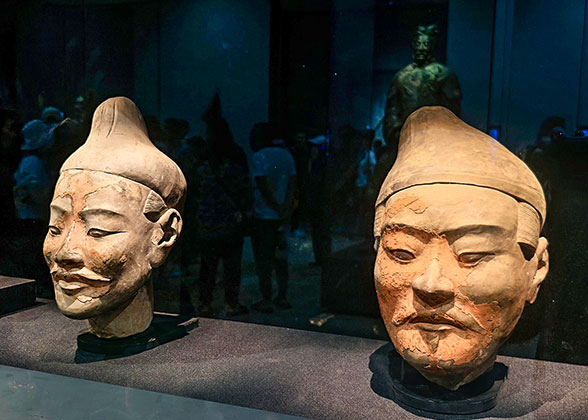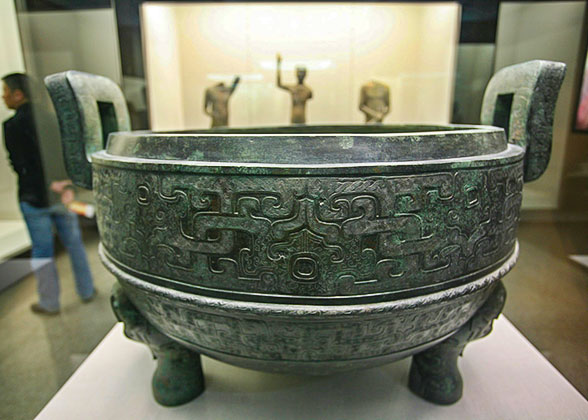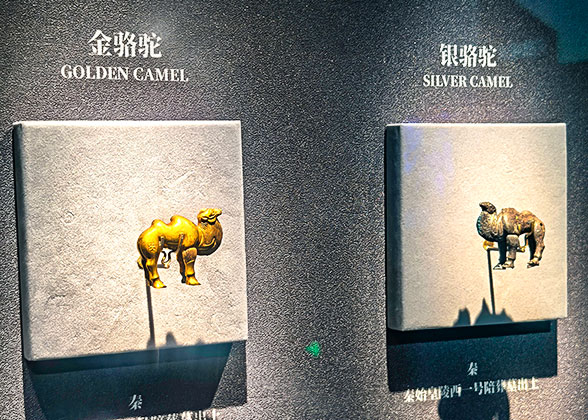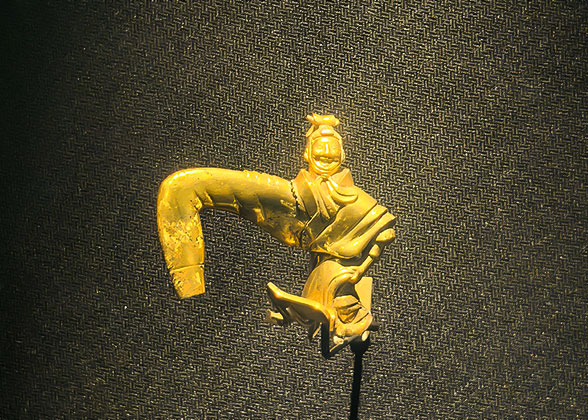 |
| Colored Terracotta Warriors Heads |
2024 is the 50th anniversary of the discovery and archaeological excavation of the
Terracotta Army. To commemorate this significant archaeological event in human history and show world’s people the great discoveries, new exhibitions have been on display since September 8, 2024 in the Exhibition Hall of Terracotta Army Museum adjacent to
Pit 2.
According to the official release, this will be a long-term exhibition. The
Bronze Chariots and Horses previously exhibited here have been moved to
Qin Shi Huang's Mausoleum Site Park (Lishan Garden) about 1.5km (0.9mi) away. It shares the same entry ticket with Terracotta Army Museum and there are free shuttle buses running back and forth between.
What Makes the New Exhibitions Different
These 230 pieces/sets of exhibitions, categorized into 8 units, are all among the best excavations from the Mausoleum of Qin Shi Huang – the first emperor of China, including the Terracotta Army supposed to protect him in his afterlife; and about 1/3 of them are displayed to the public for the first time.
What also makes the exhibitions visit-worthy is that tourists can observe their details at a very close distance, while at the Terracotta Army Pits, they can only stay beyond the fences and see from a certain distance.
Below are some of the exhibitions you should not miss:
1. Colorful Terracotta Warriors
All the terracotta warriors and horses are colored when made. However, after being buried underground for about 2,200 years, the colorful layer peeled off once excavated and exposed to the air. So the colorful terracotta warriors are very rare and seldom seen. Look carefully at blow three warriors, you will see their pink faces. The one in the middle even has some red color on his armor.
These lifelike statues were once buried in the “Royal Garden” not far away from the mound of the Emperor Qin Shi Huang, to entertain him in another world.
This is the largest tripod discovered in the Mausoleum of Qin Shi Huang by now, with the height being 61cm (24in), diameter being 65.5 - 71cm (25.8 - 27.95in), and weight being 212 tons. Another feature of this large tripod is that the delicate patterns are well-preserved. Being discovered next to the terracotta acrobats, someone think it is an entertaining tool; while some consider it as a sacrificial vessel.
 |
| Bronze Aquatic Crane |
|
 |
| Bronze Tripod |
|
4. Golden and Silver Camels
This is their first exhibition in the public after being excavated from No.1 West Accessory Tomb. They are so vivid with towering humps and strong legs, reflecting the super craftsmanship of the Qin Dynasty (221 - 207 BC). It also tells that before the open of the Silk Road in the Han Dynasty (202 BC - 220 AD), there had been communications between Central China and Western Regions.
5. Golden Dancing Figurine
If looking carefully at the figurine’s face, you will find it is a male, telling that there were also male dancers in ancient China, not just female dancers.
 |
| Golden and Silver Camels |
|
 |
| Golden Dancing Figurine |
|





